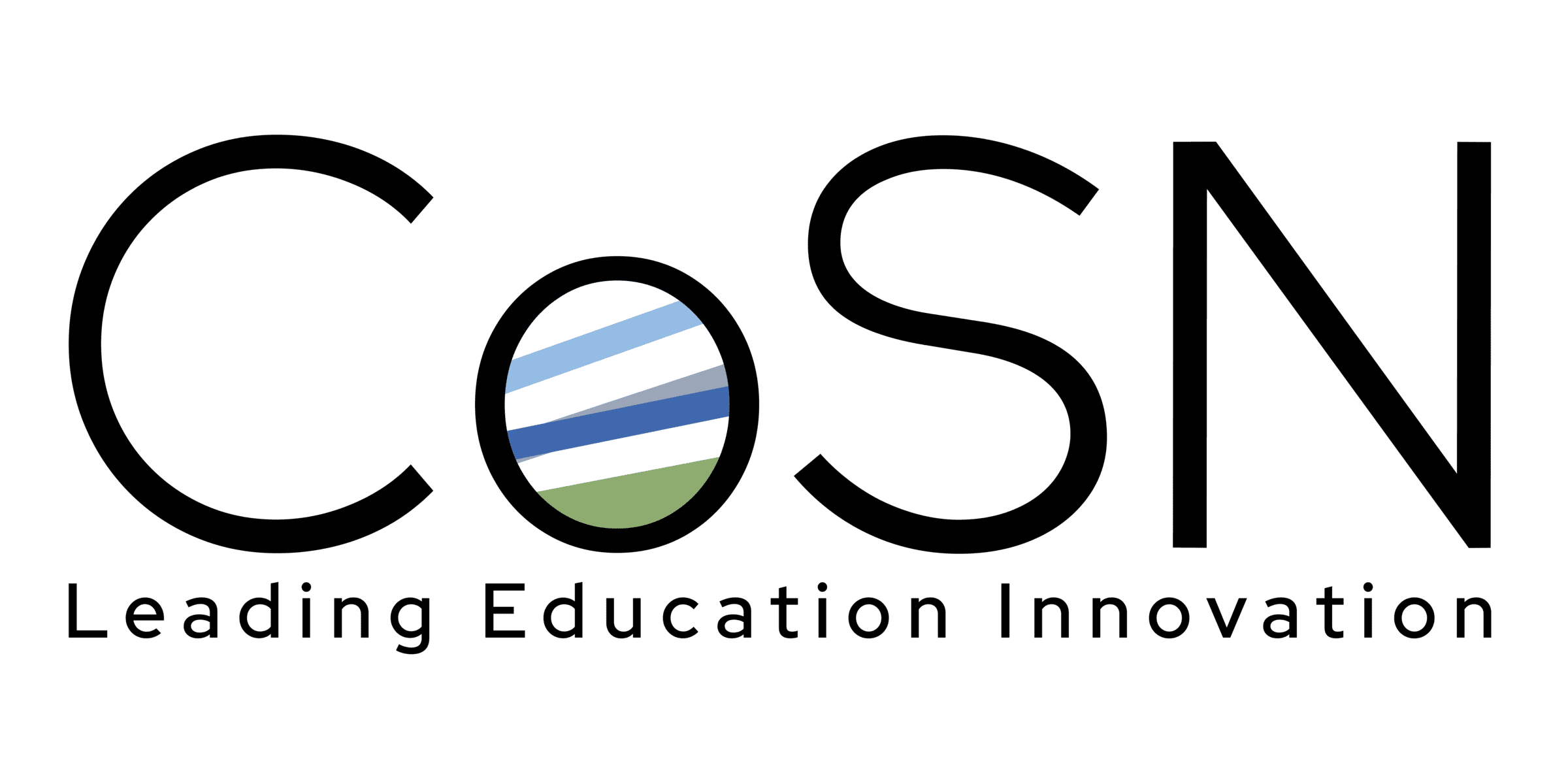Resource Provides Flexible Framework to Empower Schools to Make Environmentally Responsible and Operationally Effective Technology Purchasing Decisions
Washington, D.C. (September 25, 2025) – CoSN, SETDA and UDT today released Sustainability Procurement Guidelines, providing practical strategies to help K-12 school and district leaders, procurement officers, and technology directors make purchasing decisions that support both financial and environmental goals.
As K-12 education technology spending continues to grow, reaching over $30 billion in 2024 and projected to nearly double by 2033, schools have an opportunity to make smart purchasing decisions that reduce long-term costs and maximize the value of their technology investments. By adopting sustainable practices, schools can reduce utility costs, cut down on repair and replacement expenses and increase the long-term value of their investments. These decisions can also create healthier learning environments and demonstrate responsible leadership to students, families and the broader community.
“The Sustainability Procurement Guidelines provide K-12 leaders with a practical roadmap to make technology purchasing decisions that are both fiscally responsible and environmentally sustainable,” said Louis McDonald, Project Director, CoSN K-12 Technology Environmental Sustainability. “By focusing on energy efficiency, durability, repairability and vendor practices, the guidelines help districts extend the life of their technology investments, reduce costs and model responsible leadership for their communities. I’m proud of what we accomplished together and excited to see how districts will use these guidelines to lead by example for their students and communities.”
“We’re incredibly grateful to CoSN and SETDA for their work to produce the Sustainability Procurement Guidelines,” said Devin Hicks, Vice President of Lifecycle Managed Services, UDT. “At UDT, we believe that sustainability is not just a goal — it’s a responsibility. We are always exploring ways to further reduce our environmental footprint while continuing to support digital learning for students. This report is a powerful reminder that when industry-leading hardware partners, strategic environmentally conscious solution providers and education leaders come together, we can build technology ecosystems that are both innovative and sustainable.”
Key Categories of Sustainable Procurement
- Energy Efficiency: Specifying energy-efficient standards in procurement contracts reduces energy consumption, operational costs and environmental impact. The Energy Star certification, the Electronic Product Environmental Assessment Tool (EPEAT) and the Federal Energy Management Program (FEMP) provide benchmarking and efficiency requirements to ensure technology meets strong energy performance standards. San Diego Unified School District has saved $90 million over the past 12 years through its sustainability initiatives.
- Recyclable and Sustainable Materials: Selecting recycled content and renewable resources can lower environmental footprints and operational costs, with some districts reducing costs by up to 20 percent. Devices designed for recyclability reduce landfill fees and e-waste handling expenses, while the use of sustainable materials enhances product durability and reliability. Vendors like Dell and Cisco report millions in savings through reuse and recycling programs.
- Long Product Lifespan: Durable devices play a crucial role in long-term cost efficiency and sustainability, as schools face damage rates of 8 percent to 25 percent annually. Specifying durability standards during procurement, investing in protective accessories, implementing structured maintenance routines, purchasing extended warranties and planning for full device lifecycles extends device longevity and minimizes repair and replacement costs. Doubling Chromebook lifespans could save $1.8 billion nationally, and Google’s 10-year update policy further supports device longevity.
- E-Waste Reduction: E-waste is the world’s fastest-growing waste stream, with only 22 percent of discarded electronics properly recycled. Extending device lifespans through repair, reuse and trade-in programs reduces discarded electronics while generating funds for new purchases — as seen in Parma City School District, which secured competitive buyback prices for thousands of electronics. Leading trade-in and recycling vendors ensure secure data destruction and provide detailed audit reports, protecting sensitive information throughout the process.
- Modularity and Repairability: Devices engineered for easy and affordable repairs can significantly extend their usable life, reduce electronic waste and lower the total cost of ownership. A comprehensive repair strategy includes in-house teams, certified repair partners and student-led tech squads, which provide STEM learning opportunities and help districts refine policies, implement protective measures and make data-driven purchasing decisions. Including repairability standards in procurement contracts — such as guaranteed spare parts availability for at least five years, open access to repair manuals and support for third-party repairs — help protect school budgets and promote sustainability.
- Vendor Sustainable Practices: Partnering with vendors that prioritize sustainability strengthens district sustainability goals and reduces environmental impact. Organizations that adopt sustainable procurement practices can reduce their overall environmental impact by up to 30 percent. Apple reports over 20 percent of its product materials are recycled or renewable, while Dell offers a program for schools to securely retire devices, manage e-waste and comply with environmental regulations.
“Sustainable procurement is responsible leadership. When states and districts consider environmental sustainability in their technology decisions, they align fiscal responsibility with long-term impact. That is how we ensure every device investment truly serves students, communities and the future,” said Julia Fallon, Executive Director, SETDA.
Sustainable procurement for K-12 schools is not only good for the environment, but also a strategic investment that can deliver measurable financial savings while advancing student well-being and environmental responsibility. By prioritizing sustainability, districts reduce operational expenses, avoid unnecessary waste and extend the useful life of their investments. Choosing energy-efficient, durable and repairable devices helps lower utility bills, reduce repair and replacement expenses, and stretch limited budgets further. Beyond financial returns, sustainable procurement creates healthier learning environments, fosters responsibility and reinforces a district’s role as a community leader.
To download the full report, visit: https://www.cosn.org/wp-content/uploads/2025/09/CoSN-2025-Sustainability-Procurement-Guidelines_CoSN_SETDA_UDT-1-1.pdf
To learn more about the Sustainability Procurement Guidelines, visit: https://www.cosn.org/tools-and-resources/resource/sustainability-procurement-guidelines/
About CoSN
CoSN, the world-class professional association for K-12 EdTech leaders, stands at the forefront of education innovation. We are driven by a mission to equip current and aspiring K-12 education technology leaders, their teams, and school districts with the community, knowledge, and professional development they need to cultivate engaging learning environments. Our vision is rooted in a future where every learner reaches their unique potential, guided by our community. CoSN represents over 13 million students and continues to grow as a powerful and influential voice in K-12 education. www.cosn.org/
About SETDA
SETDA is the principal membership organization serving edtech and digital learning leaders from every U.S. state and territorial education agency. Since 2001, SETDA has supported state education agencies in leveraging technology to strengthen teaching, learning, and school operations—contributing to sustained impact across the education landscape. Through cross-sector partnerships, professional development, and advocacy at the federal level, SETDA works to ensure every student has access to high-quality digital learning opportunities. www.setda.org/
About UDT
UDT (United Data Technologies) is a national provider of IT and telecommunication solutions that modernize, connect, secure, and manage technology environments for commercial enterprises, state and local governments, and educational institutions.
With a portfolio that spans IT managed services, endpoint lifecycle solutions, cybersecurity, networking, computing, cloud, connectivity, and voice services, UDT helps clients align technology with their most important business priorities—empowering insight-driven IT strategies that accelerate innovation, streamline costs, and reduce risk. UDT has more than 400 professionals nationwide and is noted as a national leader in K-12 education technology.
Founded in 1995 and headquartered in Miramar, Florida, UDT serves customers across the United States. For more information, visit udtonline.com.
MEDIA CONTACTS:
For CoSN: Makenzie Carlin, mcarlin@fratelli.com
For SETDA: media@setda.org
For UDT: Thomas Mulgrew, thomas@tsgnashville.com

